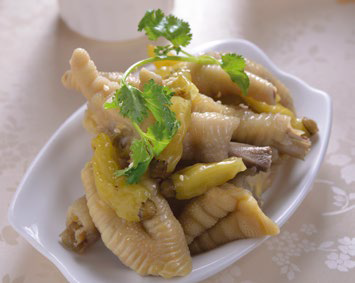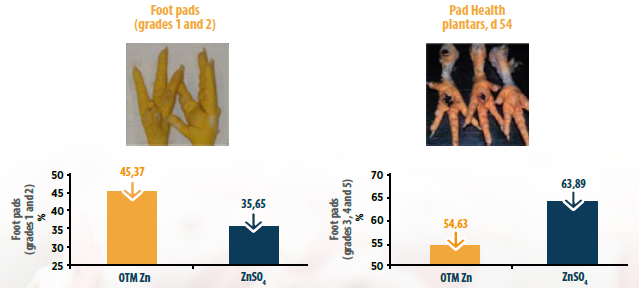
Animal Health & Pathology
Emerging Footpad Dermatitis Challenges In Broilers And Nutritional Interventions
To read more content about AviNews June 2024
Animal Health & Pathology
To read more content about AviNews June 2024
Content available at:
ไทย (Thai) Tiếng Việt (Vietnamese) Philipino
Footpad Dermatitis
The broiler industry has made significant progress in the last two decades with genetic improvements and husbandry management that have made a very efficient and fast-growing broiler.
Management and nutrition have been geared to support bigger birds in the least amount of time.
This summary covers the most emerging structural integrity challenges related to footpad dermatitis and carcass quality the current broiler industry is facing and nutritional interventions that can ameliorate the challenge.
Footpad dermatitis is a skin inflammation that causes necrotic lesions on the plantar surface of footpads in poultry (Shepherd et al., 2010).

Chicken paw profitability has been estimated at approximately $280 million a year (US Poultry & Egg Council, 2016).
Lesions in footpads can induce systemic infection in poultry, hence, footpad dermatitis is considered as a food safety issue (Matland, 1985; Campo et al., 2005; Managi et al., 2012).
Footpad dermatitis is a multifactorial condition that is caused by:
(Mayne, 2005, Harms et al., 1977; Nagaraj et al., 2007).
Wet litter has been reported to be the most central predisposing factor for footpad dermatitis development in poultry (Martland, 1984; Wang et al 1998; Mayne 2007).
Some researchers have reported that replacement of wet litter with dry litter improved the footpad lesions in about two weeks (Nagaraj et al, 2007; Taira et al., 2014).
Unfortunately, in the field, replacement of wet litter is not practical or economical, hence, alternative practices should be considered.
Trace minerals such as Zn, Cu, and Mn are known to play a role in maintaining the structural integrity of different tissues including skin (Manangi et al, 2012; Maricola 2003; Lansdown et al., 2007; Iwate et al 1999, Viera et al. 2013, Berger et al., 2007 Figure 1).

A variety of biomarkers for footpad lesion development and wound healing which can be used to better understand the pathology and etiology of footpad dermatitis and find strategies to intervene or prevent the development of footpad lesions and promote the wound-healing process (Chen et al., 2016; Figure 2).

Figure 3. Reduction in Zn levels Chelato MMHAC (30ppm Zn) vs ZnSO4 (100ppm Zn) help foot dermatitis.
Several studies have been run to evaluate the role of trace minerals at preventing the development of footpad lesions by supporting the process of wound healing.
Researchers (Figure 3; Manangi et al., 2012; Chen et al., 2017) have found that supplementation of combination of Zn, Cu and Mn trace minerals in the form of mineral methionine hydroxy analog chelated (MMHAC) improved growth performance, but also reduced footpad lesions by improving the wound healing process via promotion of collagen synthesis, deposition and organization, cell migration, matrix remodeling, angiogenesis; and regulation of inflammation (Figure 4).
Figure 4. Participation of trace minerals in the regulation of the healing process.
CONCLUSIONS
Trace minerals participate in the wound healing process by reducing inflammation, increasing expression of gens involved in vascularization, migration and proliferation of the cell and deposit and remodeling of collagen.
Trace minerals participate in the wound healing process by reducing inflammation, increasing expression of gens involved in vascularization, migration and proliferation of the cell and deposit and remodeling of collagen.
Supplementation trace mineral of higher availability like MMHAC, improves footpad dermatitis and skin integrity by improving the wound healing process which results in reduction of footpad dermatitis.
References upon consultation of the author